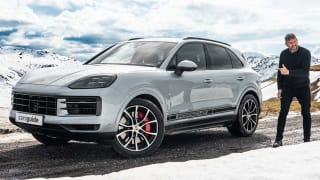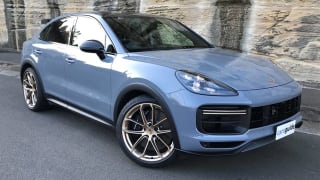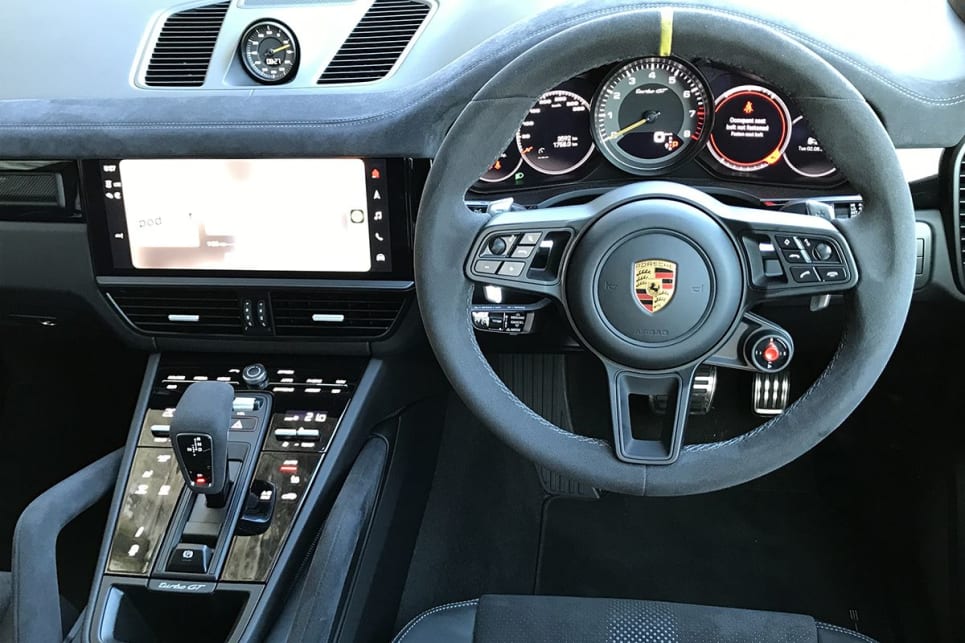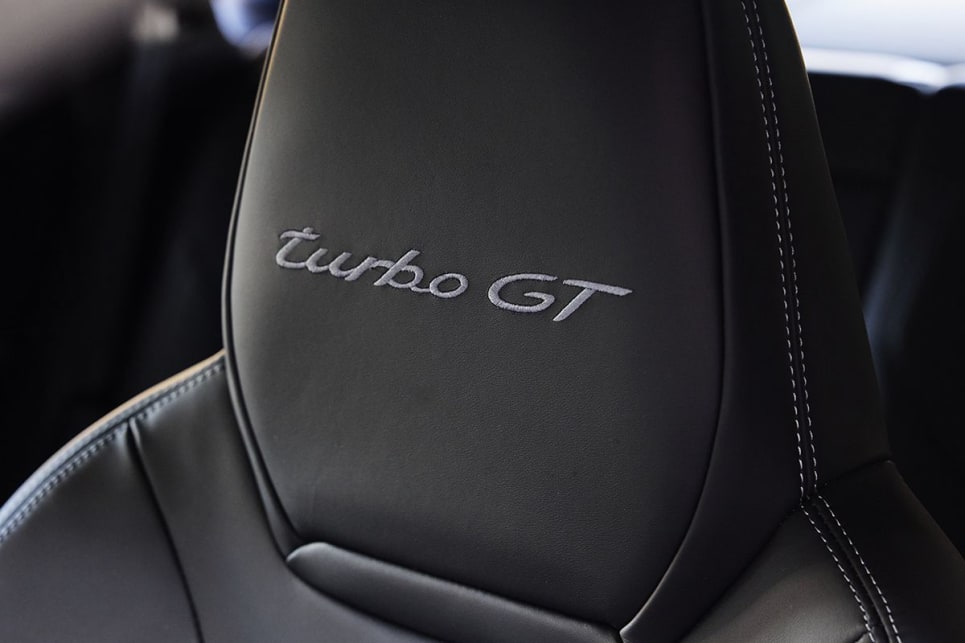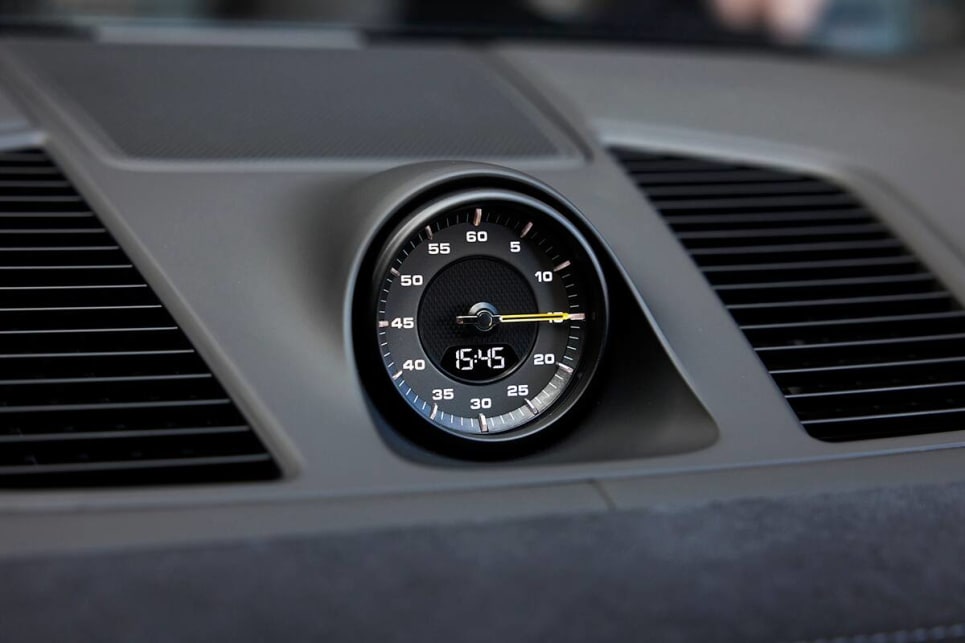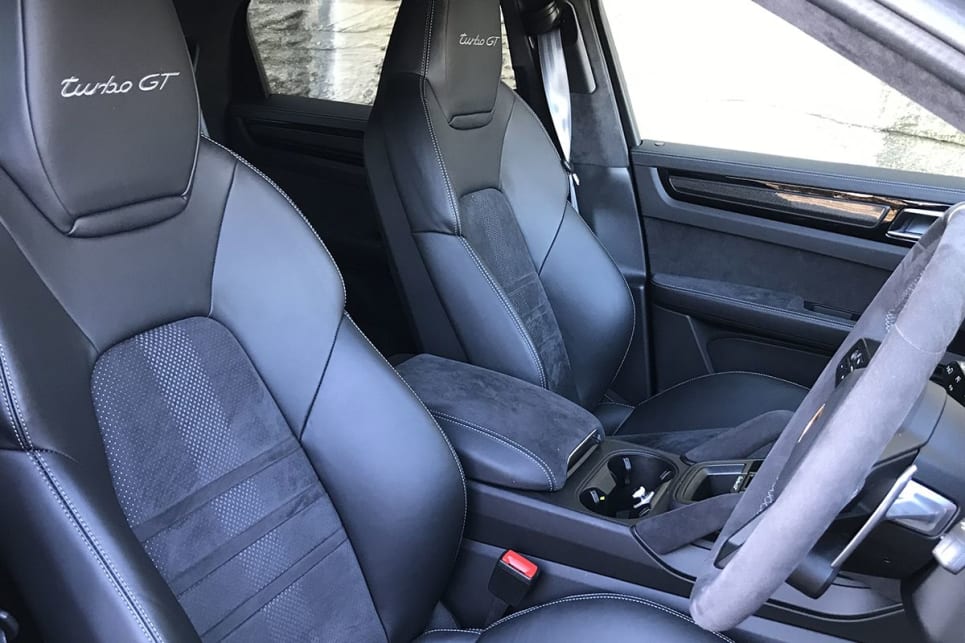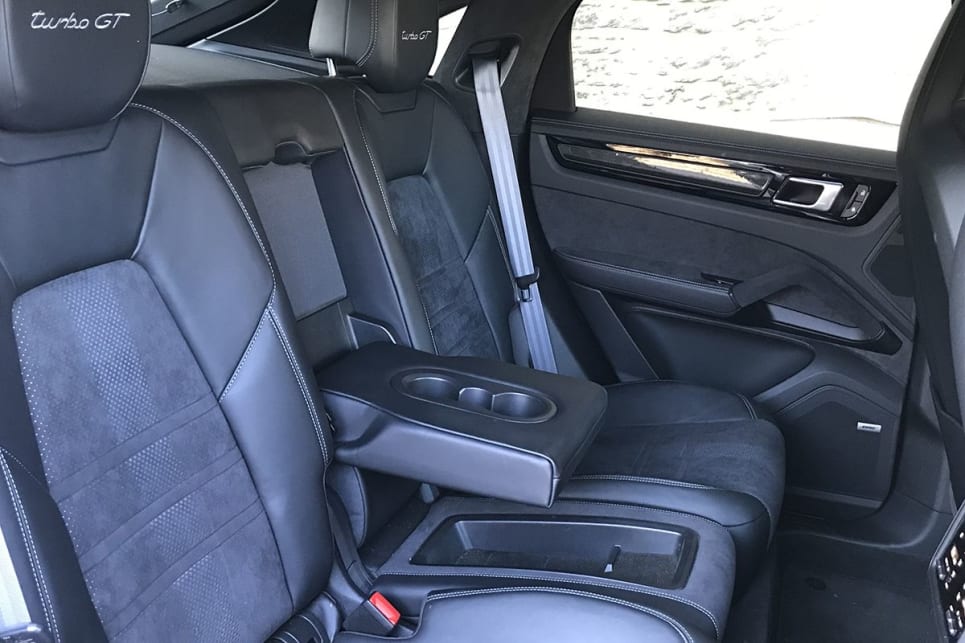
What's on this page
Porsche Cayenne 2023
Carsguide Managing Editor Tim Nicholson had this to say at the time: My biggest gripe with the previous Cayenne was that it was priced so much higher than its rivals, and it just didn't have enough standard gear to compensate - you were really paying for that badge. Too many features were offered as very pricey options.
You can read the full review here.This is what Tim Nicholson liked most about this particular version of the Porsche Cayenne: Improved powertrain line-up, Still fun to drive, Cabin tech and quality
The 2023 Porsche Cayenne carries a braked towing capacity of up to 3500 Kg, but check to ensure this applies to the configuration you're considering.
Porsche Cayenne 2023 News
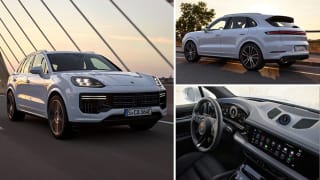
2024 Porsche Cayenne Turbo E-Hybrid price and specs: BMW X5 M and Mercedes-AMG GLE63-beating performance and cost
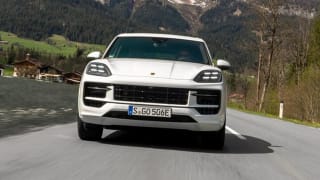
When is the new Porsche Cayenne electric car coming? Timing confirmed for new BMW iX, Kia EV6 rival, and more details on new larger electric SUV revealed!
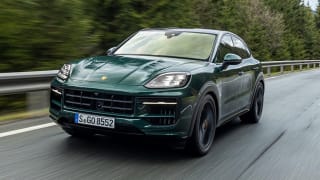
Why the 2023 Porsche Cayenne has bucked the electric car trend and added more V8s to the BMW X5 rival's range
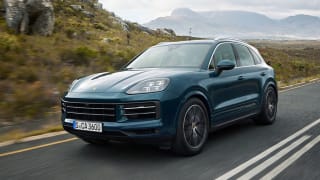
Price pump-up! Porsche Australia increases prices by as much as $38,900 for almost the entire line-up including Macan and Cayenne SUVs
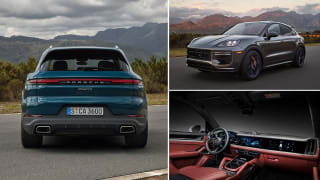
Spice world! 2024 Porsche Cayenne debuts, but is the change enough to stop the BMW X5 and Mercedes-Benz GLE in their tracks?
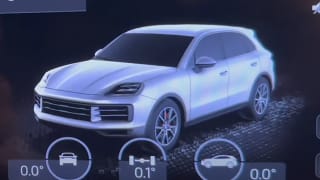
More than a facelift: 2024 Porsche Cayenne revealed in preview ahead of official debut
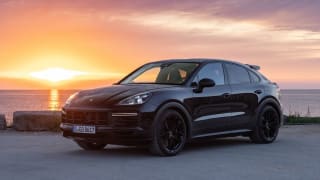
Confirmed! 2026 Porsche Cayenne electric car to follow Macan, before 718 sports car and new large SUV go electric

Tesla Model X who? 2026 Porsche Cayenne electric car in the works to bring the heat to electric SUVs

The new pioneer: Why the next Porsche Macan will do for electric cars what the Cayenne did for SUVs | Opinion
Porsche Cayenne 2023 Price and Specs
Pricing guides

| Porsche Cayenne Model | Body Type | Specs | Price from | Price to | |
|---|---|---|---|---|---|
| (base) | SUV | 3.0L — 8 SP | $137,390 | $157,960 | |
| (base) | SUV | 3.0L PULP 8 SP | $137,170 | $157,630 | |
| E-Hybrid | SUV | 3.0L — 8 SP | $144,870 | $166,540 | |
| E-Hybrid | SUV | 3.0L Hyb/PULP 8 SP | $151,470 | $174,130 | |
Porsche Cayenne 2023 Colours
Standard no-cost colours are white and black, with optional metallic shades including 'Carrera White', 'Chromite Black', 'Dolomite Silver', 'Moonlight Blue', 'Mahogany', and 'Quarzite Grey'. From there a range of 'Special' and 'Custom' colours are available.
- Porsche White
- Porsche Black
- Carrera White
- Chromite Black
- Dolomite Silver
- Moonlight Blue
- Mahogany
- Quarzite Grey
Porsche Cayenne 2023 Engine
The base Cayenne uses a 3.0-litre V6 petrol engine with an output of 260kW/500Nm.
Porsche has swapped out the turbocharged V6 in the Cayenne S for a tweaked version of the its 4.0-litre V8, which pumps out 349kW and 600Nm.
The E-Hybrid plug-in hybrid's electric motor gets a 30kW boost, and with the six-cylinder petrol engine, offers a total system output of 346kW and 650Nm.
The Turbo GT Coupe's V8 gets a 14kW power boost of power and now pumps out 485kW.
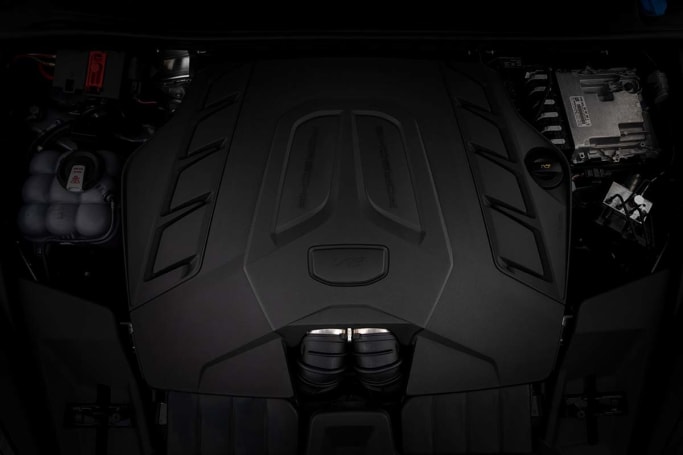
Porsche Cayenne 2023 Interior
Inside, the look and feel is sports luxury, with a mix of high quality materials and simple design setting the tone. The interior works as well ergonomically as it does aesthetically.
Porsche Cayenne 2023 Q&As
Check out real-world situations relating to the Porsche Cayenne here, particularly what our experts have to say about them.
-
Does the air suspension in the 2005 Porsche Cayenne S fail over time?
Any vehicle with air suspension can suffer failures of this technology, especially if they’ve been used hard in an off-road setting (which the original Cayenne was very well suited to). The good news is that air suspension failure should be relatively easy to spot as the car will settle into its lowest position if the suspension is letting the air out, say, overnight.
For the record, this generation Cayenne was only fitted with air suspension if you bought either of the turbocharged versions (the Turbo and Turbo S). The entry level Cayenne S was fitted with entirely conventional steel springs.
Other things to watch out for are coolant leaks from the plastic plumbing under the intake manifold while big, heavy, powerful cars like the Cayenne can be hard on tyres and brake pads. So check those things still have some life left in them, or budget for replacements.
Show more -
Porsche Cayenne: replacement key cost
Generally the cost will depend on the variant and year. You can get more information on quick and cheap key replacments from dealers or automotive locksmiths here.
Show more -
Aurion to replace my Maxima?
Thanks for the email. Hopefully I can keep this simple.
I would strongly recommend a Toyota Aurion V6 $30,990 drive away or the Toyota Camry $28,990 drive away (pricing current September 2015).
Unless you want the acceleration of the V6 I would opt for the four cylinder Camry, which is spritely enough and will also deliver good open road fuel economy.
For the type of driving you're doing you do not need the hybrid Camry.
Also, the base model Camry on the smaller wheels and Michelin tyres will be much more comfortable and a touch quieter than the dearer Camry models that come with sports tyres.
In both the Aurion and Camry you will be protected by seven airbags and a five star safety rating. A rear camera is standard on both models too.
The servicing costs are among the cheapest in the business.
Furthermore the intervals are longer than other Toyotas (15,000km rather than 10,000km) and the capped pricing lasts four years or 75,000, whichever comes first (other Toyotas are three years, 60,000km).
This was done to help Aurion and Camry appeal to fleets.
However, your warranty is the same as other Toyotas at three years/100,000km.
Dealership extended warranties are generally not worth the paper they are printed on, so save your money if you're offered an extension.
Please check you're comfortable when driving the Aurion and Camry. They have ample room inside and a lot of travel in the front seat rails.
Meanwhile, you're right in your assumption that Toyotas are regarded as a premium over Holden and Ford. The price is cheap because Toyota is trying to keep the factory running until 2017. It is in effect making a loss with each Camry it sells.
Toyota also has a vast rural dealer network so hopefully you're never far away from help should you need it.
Lastly, the Camry was at $26,990 drive away for much of last year and the price may limbo to that level again in the lead up to the end of the year or early next, to clear 2015 stock. This is not an inside tip, merely an educated guess on my part.
Good luck and let me know if I can help any further. I hope I'm still driving big distances in my 80s.
Show more
Porsche Cayenne 2023 Dimensions
Dimensions for the 2023 Porsche Cayenne are dependent on which body type is chosen. The maximum width and height is 1995mm x 1698mm and can vary on the basis of model.


| Porsche Cayenne Model | Body Type | Height x Width x Length | Ground Clearance | |
|---|---|---|---|---|
| base | SUV | 1696x1983x4918 mm | 190 mm | |
| base | SUV | 1698x1983x4930 mm | 212 mm | |
| base | SUV | 1676x1983x4931 mm | 190 mm | |
| base | SUV | 1678x1983x4930 mm | 214 mm | |
Porsche Cayenne 2023 Seats
The Cayenne is a five-seater, with one exception, the Turbo GT being a strict four-seater.
Porsche Cayenne 2023 Towing capacity
The Porsche Cayenne’s towing capacity ranges from 0kg to 3500kg. Some models also offer heavy-duty or towing option packs which can increase towing capacity, as well as options which can hamper towing capacity. Towing capacities can vary wildly on a large number of factors. These include engine, transmission, model, and options chosen. Always check with the manufacturer or in your vehicles handbook before attempting to tow anything.
| Porsche Cayenne Model | Body Type | Specs | Braked Capacity | |
|---|---|---|---|---|
| base | SUV | 3.0L,PULP,8 SP | 3500kg | |
| base | SUV | 3.0L,—,8 SP | 3500kg | |
| base | SUV | 3.0L,PULP,8 SP | 3000kg | |
| Platinum Edition | SUV | 3.0L,PULP,8 SP | 3500kg | |
Porsche Cayenne 2023 Wheel size
Wheel size for the 2023 Porsche Cayenne will vary depending on model chosen, although keep in mind that many manufacturers offer alternate wheel sizes as options on many models.The wheel size available will alter the range of tyres available to be fitted.
| Porsche Cayenne Model | Body Type | Front Tyre Size | Front Rim | Rear Tyre Size | Rear Rim | |
|---|---|---|---|---|---|---|
| base | SUV | 255x55 ZR19 | — | 275x50 ZR19 | — | |
| base | SUV | 255x55 ZR20 | — | 295x45 ZR20 | — | |
| base | SUV | 275x45 ZR20 | — | 275x45 ZR20 | — | |
| Platinum Edition | SUV | 285x40 R21 | — | 315x35 R21 | — | |
Porsche Cayenne 2023 Accessories
All Cayenne models feature multi-zone climate control, alloy wheels (from 19 to 22 inches), cruise control, a power tailgate, rain-sensing wipers, auto headlights, (at least) leather-accented trim, sat nav, and minimum 11-speaker audio.

Porsche Cayenne 2023 Boot Space
With the split-folding rear seat upright available cargo space is 549 litres (VDA), expanding to 1464 litres (measured to the roof) with it folded down.
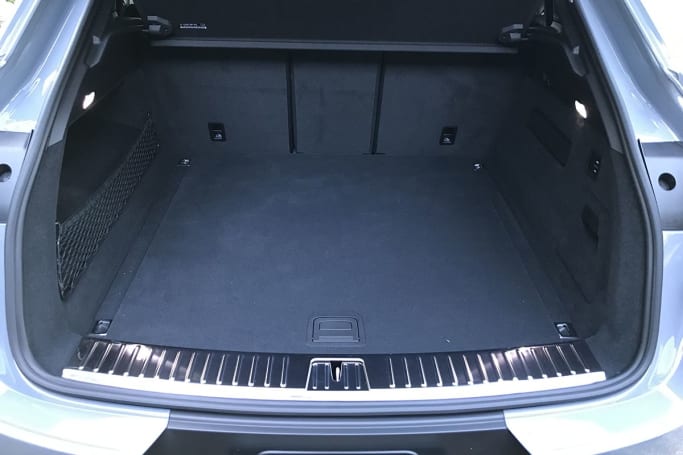
Porsche Cayenne 2023 Fuel consumption
Fuel consumption for the 2023 Porsche Cayenne is dependent on the type of engine, transmission, or model chosen. The Porsche Cayenne is available with the following fuel types: —, Hyb/PULP and PULP.
| Porsche Cayenne Model | Body Type | Specs | Fuel Consumption | |
|---|---|---|---|---|
| E-Hybrid | SUV | 3.0L,—,8 SP | — | |
| E-Hybrid | SUV | 3.0L,Hyb/PULP,8 SP | 3.5L/100km | |
| S | SUV | 4.0L,—,8 SP | 12.3L/100km | |
| S E-Hybrid Phev | SUV | 3.0L,—,8 SP | 4.4L/100km | |
| base | SUV | 3.0L,PULP,8 SP | 9.2L/100km | |
| base | SUV | 3.0L,—,8 SP | 10.4L/100km | |
Porsche Cayenne 2023 Speed
Porsche Cayenne 0-100km/h times and tops speeds are as follows:
Cayenne: 6.0sec/243km/h
E-Hybrid: 5.1sec/263km/h
S: 5.0sec/263km/h
GTS: 4.5sec/270km/h
Turbo: 3.9sec/286km/h
Turbo S E-Hybrid: 3.8sec/295km/h
Turbo GT: 3.3sec/300km/h
Porsche Cayenne 2023 Range
The Cayenne base grade has seen fuel use increase by 0.9 litres to 10.8 litres per 100 kilometres.
The V8 Cayenne S now consumes more fuel given it has gone from a V6 to a V8 - it’s up by more than 2.0/L to 12.4L/100km.
The E-Hybrid is more efficient than the outgoing version so fuel use has dropped from 3.5L to 1.5 to 1.8L/100km.
Battery capacity is up to 25.9kWh, ensuring an electric-only driving range of between 66 and 74 kilometres.
The Coupe body style is so slightly thirstier than the SUV in each respective grade, by just 0.1L/100km.


